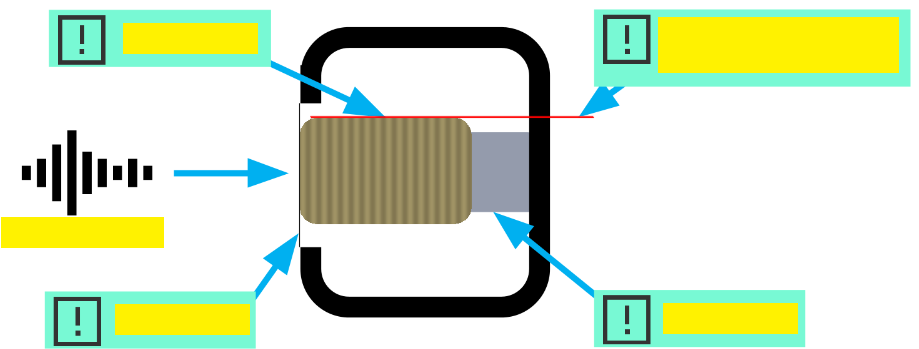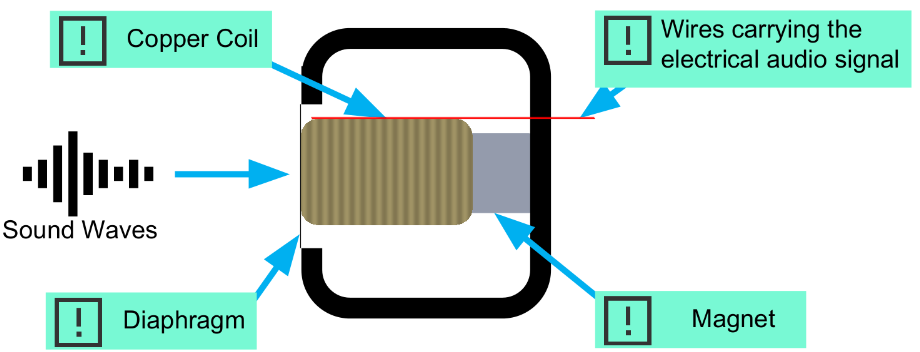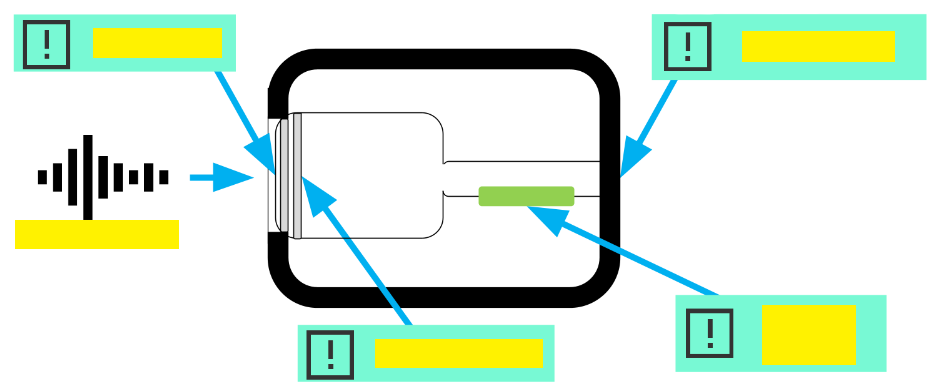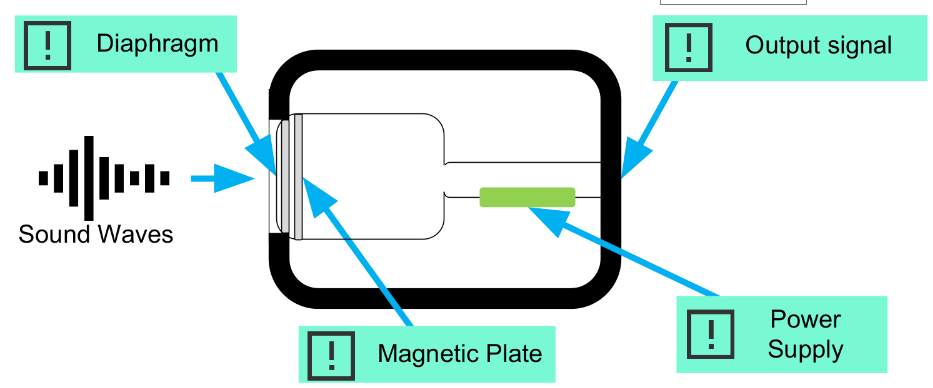Condenser v.s. Dynamic Microphones
1/6
Earn XP
Description and Tags
Music Tech || MT CA5 - Multitrack Recording
Name | Mastery | Learn | Test | Matching | Spaced |
|---|
No study sessions yet.
7 Terms

How do dynamic microphones work?
Dynamic microphones have what is called a moving coil.
When you speak into a dynamic microphone:
A magnetic coil moves back and forth.
This movement generates a small electrical voltage.

Label the parts of the dynamic microphone.
Copper coils
Sound waves
Diaphragm
Wires carrying the electrical audio signal
Magnet

How do condenser microphones work?
Condenser microphones have a capacitor which consists of two charged magnetic plates.
When you speak into a condenser microphone:
The distance between these two plates changes
This movement create a change in voltage

Label the parts of the condenser microphone.
Diaphragm
Sound waves
Magnetic plate
Power supply
Output signal

What is phantom power?
For condenser microphones to work they require a power supply of +48 Volts.
This is known as phantom power.
Usually this is supplied by your audio interface through the XLR cable.
What are the features of dynamic microphones?
Can withstand high sound pressure levels (SPL)
Very robust
Does not require phantom power
Generally, narrower frequency range
Curved frequency response
Requires more gain: less sensitive to picking up faint and/or distant sounds
What are the features of condenser microphones
Can generally handle lower sound pressure levels (SPL)
More fragile
Requires phantom power
Generally, wider frequency range
Flatter frequency response
Requires less gain: more sensitive to picking up faint and/or distant sounds